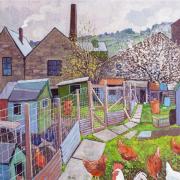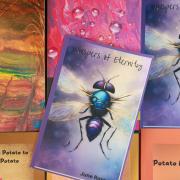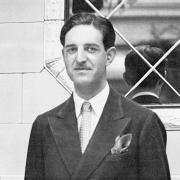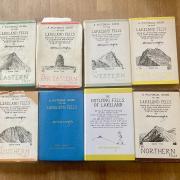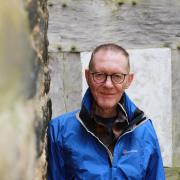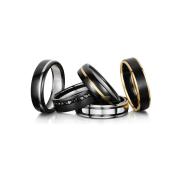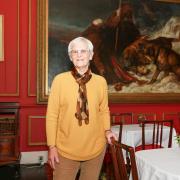Some might support male inheritance, but Holker Estate is now in the capable hands of a talented woman, writes Roger Borrell

When the Duchess of Rutland declared it was quite right that inheritance passed through the male line, there may well have been a raspberry or two blown by women of what is, perhaps, a more modern outlook.
When she went on to imply that her opinion was based partly on the fact that running a large estate could be too much of a burden for a mere woman, Lucy Cavendish could have been forgiven for smiling to herself.
While she has no strong views on the way inheritance works among the British aristocracy, Lucy has become quite an expert in hard work. It is now almost two years since she took over running the multi-faceted Holker Estate from her father, Lord Cavendish, and she seems like a woman enjoying the challenge.
This old Lancashire estate, based in Cark-in-Cartmel, covers 17,000 acres and employs more than 250 people. Many more will rely on it for their livelihoods. It’s a big responsibility for a ‘mere woman’.

Lucy, who is 42 and single, was born at Holker (pronounced Hooker) and lived in this wonderful confection of architectural styles and gorgeous gardens until her mid-teens when she went off to boarding school.
She has two siblings – an elder brother and a younger sister – but despite what any Duchess might think, when a successor was needed to take over the stewardship from Lord Cavendish after 42 successful years at the helm, the role naturally fell to her.
Lucy’s previous working life was dominated by art. She is a gifted painter, mainly of dramatic, brooding landscapes. After completing a degree at City and Guilds Arts School in London, she spent a decade as a professional painter in Spain, Morocco and New York before establishing a studio back in the capital. ‘I worked very hard at it and I seemed to be making a successful career,’ she said.
However, the pull of Holker never left her and it is clear that it never will. ‘It was always the landscape I loved the most and I never lost touch. I didn’t have an executive role at Holker but I always remained involved with what was going on.’
She laughed as she recalled: ‘My father used to say I was like a hefted sheep, which is not exactly the image I want to portray. But he is right. I instinctively return to Holker.’
She is matter-of-fact about becoming chairman of the estate. ‘My father has always been very broad-minded and, when the time came for someone to take over, he thought I was the most appropriate.’ It hasn’t been a bone of contention. ‘It suited everyone so everyone is happy with the arrangement.’
While Lord Cavendish could obviously see the potential in his daughter, Lucy was the first to admit that she had little business experience, certainly not enough to run an enterprise with an annual turnover in excess of £20 million.
Most of us tend to think of Holker as a stately home with an annual garden festival, but there is much more to it. The group’s portfolio also includes Burlington Stone, Cartmel Racecourse, Devonshire Buildings and Holbeck Homes in Barrow, Longlands and Old Park Wood Holiday Parks and there is a joint venture with estate agent Corrie and Co.
Lucy embarked on a four year apprenticeship, beginning with Burlington Stone, which quarries and creates beautiful slate sheets used in anything from upmarket kitchens and bathrooms to exterior cladding and roofing. ‘This was the toughest part of the apprenticeship because the slate quarry is a complicated part of the business,’ she said.
Needless to say, she got the hang of it but she is quick to throw the spotlight on others. ‘There was an element of me trying that bit harder because I was the boss’s daughter and had something to prove but my father has traditionally gathered together a very talented team of professionals and that made the difference.
‘Another challenging aspect was being objective when you have such an emotional relationship with the business and the people involved. For quite a few of the people, particularly in the house, the transition was always going to be complicated. They are a loyal and enthusiastic group of people but it’s only natural that when change comes they wonder how things are going to continue.’
A future direction will be house building, not that they have any intention of covering this beautiful part of Britain with estates. ‘There is a desperate need for affordable housing and we are interested in forming partnerships with people of a similar mind. We are losing talented people because they can’t find places to live.’
Like the tiny crystals that run through slate, long-term sustainability is ingrained in Lucy and she gets that from Lord and Lady Cavendish who continue to play an active role in the business.
The Cavendish ethos is demonstrated each year at the Garden Festival. This year 22,000 visitors basked in record temperatures during the show weekend. ‘It’s an enormous amount of hard work for everyone and it starts two months before a marquee is raised.
‘And afterwards we go into the detail – what worked, what went wrong, what we could do better and how we keep it fresh. We always want it to have a familiar core but we don’t want people to think they can skip it because it will be just like the previous year.
‘We regard the festival as a shop window for the estate and for Cumbria and I was particularly impressed by the Made in Cumbria marquee. It makes a statement about our character, our support for localness, sustainability and quality.’
And when it’s all over? ‘Just a massive feeling of relief. We tend to all fall down in an exhausted heap and then get up and start again. Perhaps the Duchess had a point about the hard work!’
You can tell she doesn’t mean a word of it.
To find out more, go to www.holker.co.uk
Click here for Linda Viney’s visit to the 2016 Holker Garden Festival.
Records of a house on the site date back to the early 16th century. Ever since, it has been the home of three families: Preston, Lowther and Cavendish. It has only ever changed hands by being passed by inheritance through the family line.
In 1871 there was a disastrous fire which destroyed the west wing along with many paintings, pieces of furniture, statues, portraits and valuable books.
William Cavendish, the 7th Duke of Devonshire, decide to rebuild on an even grander scale in red sandstone. Pevsner described it as the best example of Elizabethan Gothic in the north of England. This wing is the part of the house that is now open to the public and despite its emulation of Elizabethan architecture, it’s unmistakably Victorian.
Generations of keen, enthusiastic and gifted gardeners are responsible for the outstanding collection of trees and shrubs. Some suggest Lord Cavendish’s ancestors had a keen interest in collecting unusual trees as early as the 1750s.




